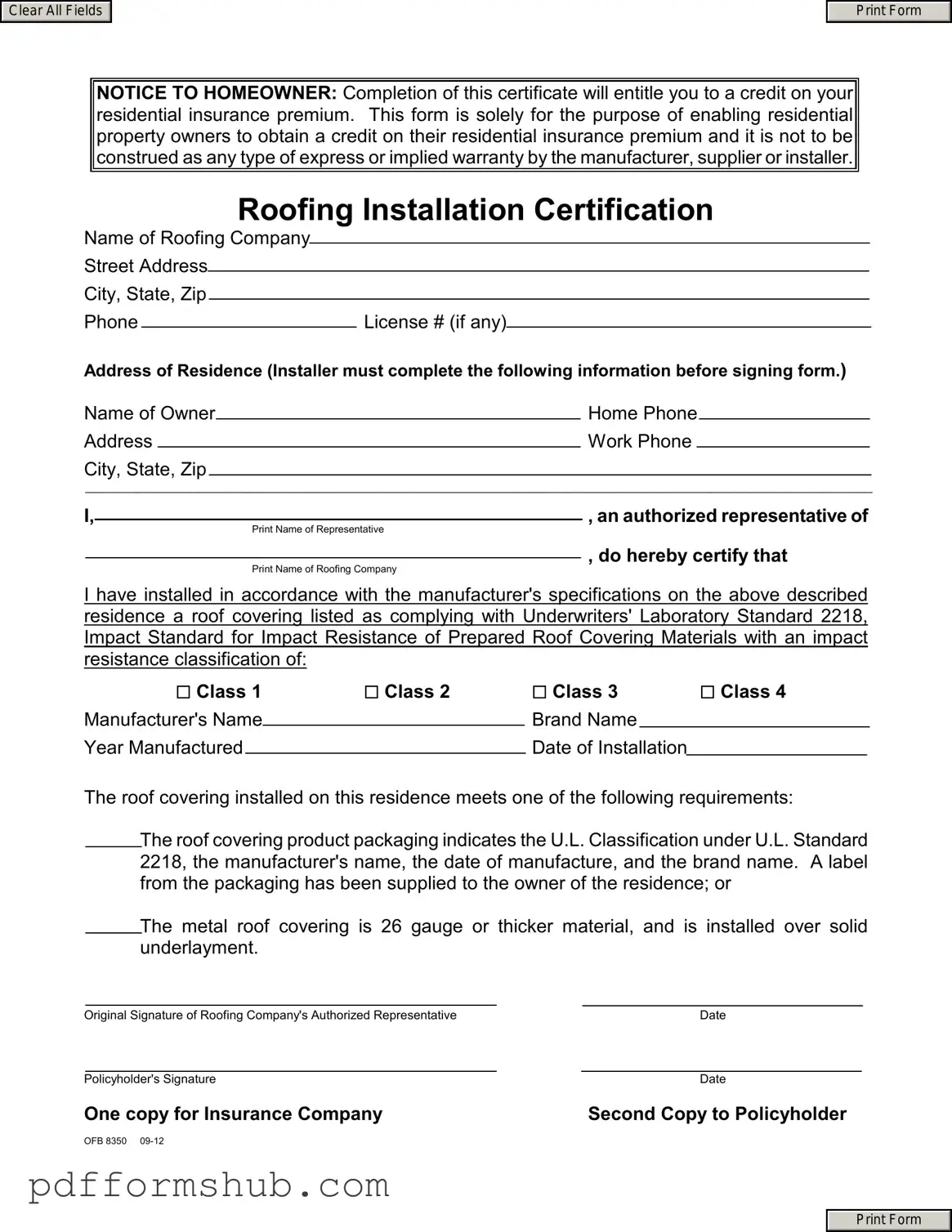The Roofing Certificate form is a crucial document for homeowners seeking to reduce their residential insurance premiums in Texas. This form, issued by the Texas Department of Insurance, serves as a certification that the roofing installation complies with specific standards, particularly Underwriters’ Laboratory Standard 2218, which assesses the impact resistance of roofing materials. Homeowners must ensure that their roofing contractor fills out key details, including the company name, license number, and installation date, along with the specific classification of the roofing material used. The form requires the roofing company to confirm that the installed roof covering meets the necessary impact resistance classifications, ranging from Class 1 to Class 4. Importantly, the certificate does not serve as a warranty for the roofing materials or installation; rather, it is a means to facilitate premium reductions. Homeowners should be aware that any misrepresentation on this form could lead to serious consequences, including charges of fraud. Completing this certificate accurately and submitting it to the insurance company is essential for ensuring eligibility for potential savings on insurance costs.
